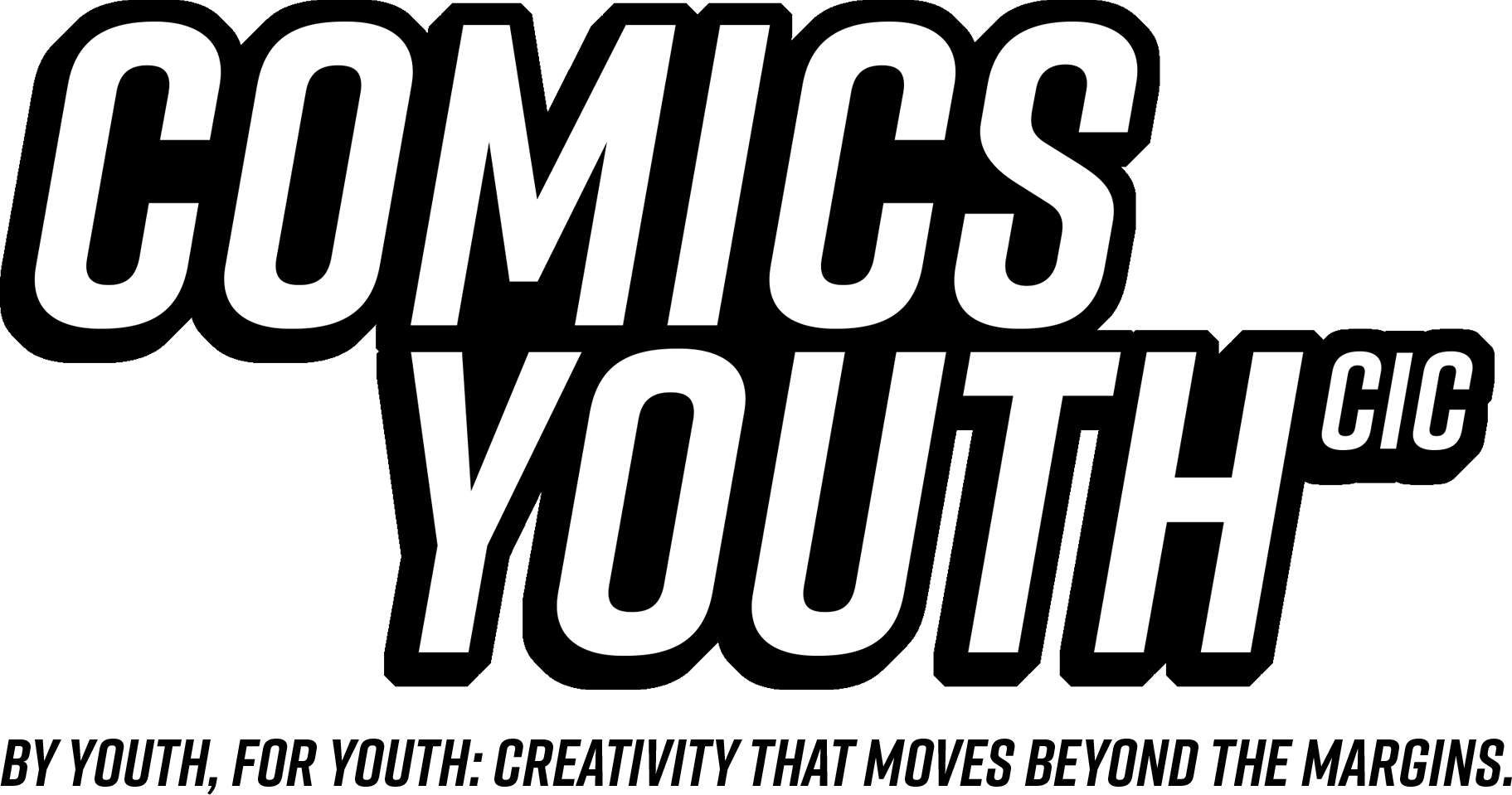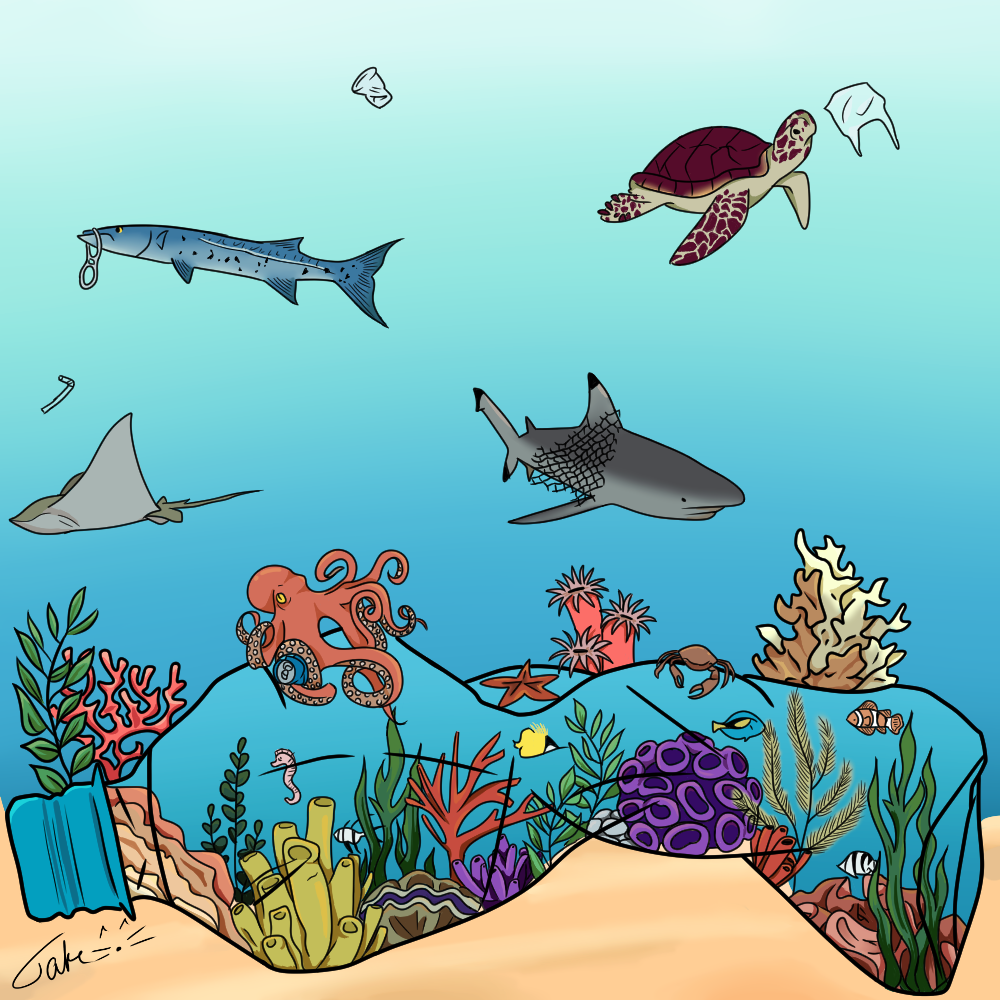Plastic Pollution (and the actual truth)
Plastic Pollution (and the actual truth)
by Jake McCrea
Plastic pollution has been advertised on our TVs as being this massive issue that is our fault and our job to tackle, save the turtles and all that. But do you know the actual facts?
Having studied our oceans up to a university level and having done my A-level course work around our seas, I would consider myself very passionate and knowledgeable about our environment, how it works, and our impact on it. The impact on our oceans due to plastic is furthered by both individuals and corporations.
My passion for this particular subject was sparked, like many due to my love for animals and the David Attenborough documentary, Blue Planet 2. From the smallest of fish to the biggest of mammals, all have their importance in our oceans, but they are being harmed by fishing equipment, plastic consumption, and damage to their food chain.
Due to my love of understanding the world around us and wanting to share the knowledge, I have written multiple sections describing plastic’s impact, what the UK is doing to further impact the pollution, how different countries are trying to reduce plastic pollution and how we as individuals can change this.
Plastic’s invention has had a detrimental effect on the world and our oceans and here’s why…
Plastic was invented 110 years ago and since then; in the last 60yrs, approximately 8300 million metric tonnes of plastic has been created; 19-23 million metric tonnes of plastic has been estimated to have entered the marine environment in 2016 alone. Many plastics sink within the ocean and can damage marine life to the extent that even deep-sea creatures and major predators have been found to have plastic within their stomach.
Not only this but corporate plastic pollution is added and is difficult to stop, when considering that there are laws stopping organisations such as RNLI destroying fishing equipment without permission from the fishing companies themselves. Adding to the concern a singular litre bottle will break down into such small pieces, that it can put fragments of plastic on every mile of beach across the world. Creating a massive cycle of plastic consumption across all degrees of marine life.
These amounts of plastics are found in such places as they are moved through ocean currents, which connects most of the world in one big cycle. This has created congregations of 5 major garbage patches, and numerous smaller ones consisting of singular use plastic, cans, glass, and more commercial plastics such as fishing nets. The biggest of these patches is the Great Pacific Garbage Patch.
Great pacific garbage patch
The Great Pacific Garbage Patch (GPGP) is the biggest mass of plastic waste within our oceans.
Firstly, myth busting: Just because the GPGP is the biggest collection of waste in our oceans, it isn’t just one big mass, it is instead measured as including bits of plastic that have sunk into the ocean and pieces that flow in and out of the patch freely: creating further issues for marine life.
The GPGP measures an estimated surface area of 1.6 million km (990000 Miles), three times the size of France and weighs approximately 100,000 tonnes. A manmade island of plastic that has acted as a breeding ground for crustaceans and worms, has also been a source of death. Sea turtles caught around the patch have up to 74% of their diets composed of ocean plastics.
So why can’t we just clean it up?
The main issue is micro-plastics that are near impossible to remove from the ocean and many already have and continuing to make its way up the food chain. Secondly, according to calculations, to clear even less than 1% of the plastic within the north of the Pacific Ocean, it would take 67 ships 1 year to clean. However, charities and companies are working to clean the major plastics from the GPGP and hope to have 90% of the main mass cleaned up by 2040. However, without tackling the main issue, plastic will continue to congregate in these areas.
What is The UK’s contribution to oceanic plastic pollution?
The UK, like most other countries has an issue with its love of single use plastic as a cheap and throw away alternative to objects that could be made of other materials. The UK in particular, produces more waste per person than any other country, to the point that we have to send our waste abroad to countries that are ill equipped to handle it. It is estimated that a truck load of our plastic waste enters the oceans every single minute adding to an ever-growing plastic soup.
While the UK has banned many single use plastics and has put a charge on others, such as plastic bags. Plastic packaging is still a huge issue, from use in shipping and within stores; approximately 100 billion pieces of plastic packaging is thrown away every year equalling 66 items per household a week.
The UK of course isn’t the only issue, such as Canada which has the longest coastline in the world has only 9% of its disposable plastics recycled and is on course to throw away £8.6 billion worth of plastic by 2030.
With the production set to rise for this flexible, cheap material, it is important a change is made now.
How are countries trying to lower ocean plastic pollution?
To put a slight positive spin on the UKs plastic waste, in January of 2023 it was announced that a deposit return scheme (DRS) will be introduced in England by 2025 which will include plastic bottles and lids, and aluminium cans but excludes glass, which can usually be recycled.
So, what does this mean and what is a DRS.
A DRS or a deposit return scheme, is a way of creating a payback scheme for returning recyclable materials and is used in many countries already with high success. One of these success stories being Germany who introduced the DRS in 2003 and since has seen 99% of the country’s plastic bottles returned for recycling. One of the reasons this is so impactful is that customers are given back approximately 22p, which is added as a tax to the original product, for returning their plastic waste. 1.2 billion containers have been diverted from landfill from this scheme since its start. Another example is Norway who introduced the scheme in 2014 and has seen 95% of the nation’s plastic bottles returned for recycling. The recycling role model Norway does this scheme slightly different. Instead of adding a tax to the product when bought, the packaging manufacturers are taxed instead for producing single use plastic and cover the cost of plastic waste collection and recycling. To potential introduce this scheme into the UK could have an amazing and positive impact on the plastic waste and the amount that end up in our oceans.
Despite the horrible facts it isn’t all doom and gloom, there is potential for big changes to happen and give way to a cleaner planet. Having over 60 countries agree to a global movement on plastic waste and the introduction of deposit return scheme in many countries, this could be the start of something new in our battle against ocean pollution.
What can we DO personally to stop plastic pollution?
On a personal level there is stuff to be done to reduce our individual plastic consumption. The most obvious is to recycle as much as possible, but I understand there is a question around how much our recycled material is actually taken to recycling plants, and what about other plastics. As mentioned previously a big issue in plastic pollution is micro-plastics, to reduce our own impact on the increase in these reaching our oceans it is important to understand the products we buy, such as products that break down rapidly into microplastics and products that contain them. Products such as face/body scrubs, and washes that are coarse in texture, often use microplastic to create this scrubbing and exfoliating effect, but then we wash it off our bodies and face directly into our water system and cannot be filtered out. There are alternatives to these types of products, including scrubs that contain other coarse material such as sand or sugar. It also important to avoid products made up solely of micro-plastics such as glitter and even wet wipes, however, if you still want to shine there are alternatives to traditional supermarket glitter, that are made of sand instead.
Lastly, if you want to reduce the plastic already in our oceans there are plenty of charities such as PAPP (People Against Plastic Pollution) and volunteer opportunities to help clean our coastlines and the oceans. However, trying to find alternatives to our usual plastic products is difficult and can be more expensive, therefore difficult for some people to achieve, instead simply signing petitions trying to force responsibility onto our government and onto companies who produce plastic waste is a great and cost effective alternative if it is not possible to switch the use of plastic in our homes.
Learning more about plastic pollution
There are many places to find out more about plastic pollution online such as https://papp.charity/plastic-pollution-facts/ and a number of TV shows and documentaries, such as BBC’s Blue Planet which inspired my passion for this subject.
Also throughout the month of April (2024) you can visit Birkenhead Park visitor’s centre for the Wirral Council Exhibition “Mutant Fish: A Warning from the Children of Wirral”.
The exhibition is made up of marine animals, of all shapes and sizes, made out of plastic created by young people and also features a series of RISO print art posters created in house at Comics Youth.
Being part of the workshops for creating these posters was the inspiration for myself to write about the facts surround plastic use and its impact in our oceans.








